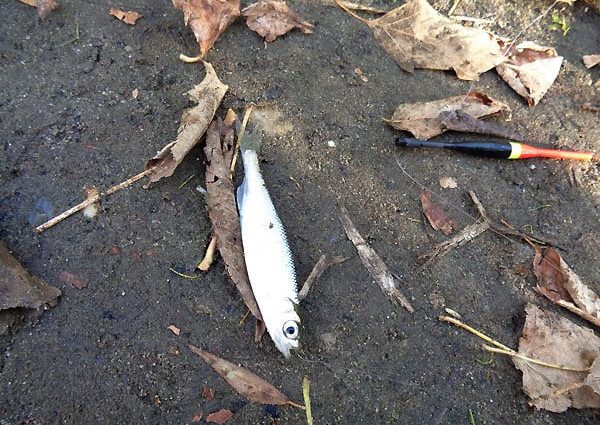Contents
Fishing for bleak
A small fish, up to 100g in size. Many anglers neglect bleak as an object of fishing, but you should not jump to conclusions. Due to the fact that fish live in large flocks, fishing for them can become a great hobby. Both in winter and summer, bleak fishing is very reckless and exciting. The fish is pelargic, so you can catch it in different ways.
Ways to catch bleak
Among the methods of catching bleak, fishing for light, small, fly fishing rods and fly fishing can be distinguished. In general, floats are considered the most popular gear for this fish. When fishing at a distance, it is great to use match rods. During the period of open water, bleak is also caught on bottom gear, for this you can use a feeder. From the ice, she also bites on winter float fishing rods, while actively reacting to jigging equipment. For fly fishing enthusiasts, bleak fishing can be a great “educational” or “training” element.
Catching bleak on a float tackle
Lightness can be considered the main rule in choosing gear for catching bleak. This applies to both “deaf” fishing rods and “long casting”. For this, you can use the lightest floats and thin fishing lines. Hooks, you can also use no more than No. 14. But here it is worth considering also the size of the nozzle. For bleak fishing, not only light fly rods are suitable, but also “long-cast” rigs.
Catching bleak with winter gear
For catching winter bleak, various fishing rods and mormyshkas are used, a special requirement for fishing line and mormyshkas. For fishing, it is worth choosing the thinnest rigs that you can “afford” in terms of fishing experience. Fishing can also be carried out on non-bait gear.
Catching bleak with other gear
To catch this fish, you can use a lot of different gear. During the autumn cooling of the water, bleak can be caught on ultra-light baits imitating juvenile fish. To do this, use spinning equipment in different versions. Great for catching bleak summer jigging tackle using fly rods. In the summer, the bleak actively feeds from the surface of the water, so it is caught on the imitation of flies. For fishing, light fly fishing tackle and tenkara are suitable.
Baits
The basis of fishing for bleak is the right bait. There are many tips on this subject, but the main principle is to keep the flock in the right place, taking into account the fact that the fish adhere to the middle and upper layers of the water, even in winter. Both vegetable and animal baits are used for the bait. Moreover, animals, fish prefer more throughout the year. Medium-sized worms, maggots, bloodworms and other invertebrate larvae are used for fishing.
Places of fishing and habitat
Bleak is widespread in Central and Eastern Europe. In Russia, the main range reaches the Urals. Currently, focal distribution is registered in Siberia. The distribution of fish is constrained by its relative thermophilicity. In addition, the fish does not like fast rivers, but does not survive well in water bodies with a difficult oxygen regime. In rivers, it prefers to stay in places with a small current, bays, backwaters, etc. In some periods, it comes to rifts, but stands in places where the flow slows down. It lives in large clusters, often moving around the reservoir.
Spawning
It becomes sexually mature at 2-3 years. Spawns in May-June. Spawns eggs on plants or on pebbles in shallow water, sometimes right on the coastline. Spawning in fish is portioned, sometimes 3-4 times, with a difference of several days.










